“We were on our way to our Christmas party when Bob Geldof called us and said ‘It’s your turn’”: The story of Band Aid II, the Do They Know It’s Christmas? they tried to forget
With the 40th anniversary remix featuring nothing from 1989’s version, let’s take a deep dive into the big-selling charity single that no one remembers
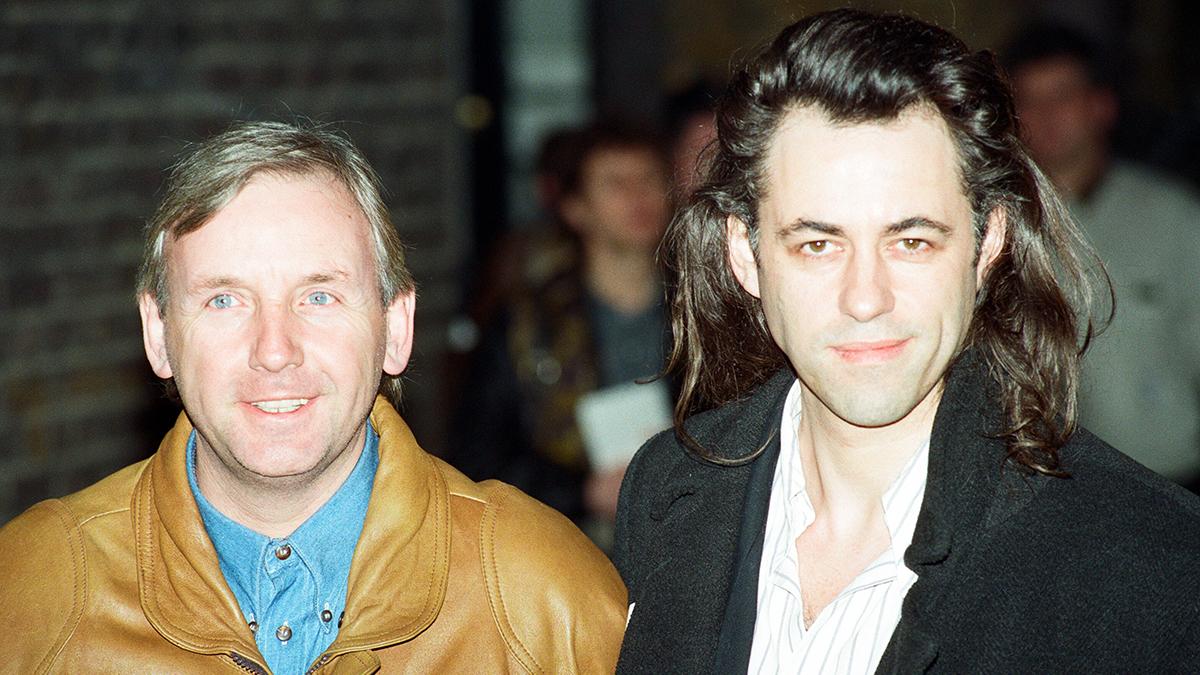
It’s Christmas time… and the 2024 ‘Ultimate Mix’ of charity classic Do They Know It’s Christmas? is out now.
The song’s latest iteration - released to mark its 40th anniversary - is a compilation of previous versions, bringing together many of its star performances in a new comp, lashed together by producer Trevor Horn.
But eagle-eared pop pundits of a certain age will soon spot that something is missing. For while the track's press release states that “Do They Know It’s Christmas? was recorded on three separate occasions, over three separate generations, Band Aid (1984), Band Aid 20 (2004) and Band Aid 30 (2014)” any Smash Hits reader worth their button badges knows that the song was in fact recorded four times.
Yes, Band Aid has officially nuked Band Aid II from history and seems to be pretending that Stock Aitken Waterman’s 1989 take on the song simply didn’t happen.
At Christmas time, it’s hard
Do They Know It’s Christmas? is a song that’s always courted controversy. From claims that cash generated by the charity wound up in the pockets of African dictators, to the softening and alteration of some of the tracks' more strident lyrics in later versions, to more recent opinions that the whole enterprise has only thrown shade on Africa. It's a charitable enterprise that has raised millions, saved hundreds of thousands, but which has had to do more than its fair share of explaining.
And, 40 years on, controversy still rages around the record. Last week, supporting the opinion that the track has actually done more harm than good, Ed Sheeran changed his tune. Having been a contributor to Band Aid 30 in 2014, he announced that he would rather have not been on the 40th anniversary record at all.
The Stock Aitken Waterman-produced first remake of the famous 1984 original featured stars of the day Kylie Minogue and Jason Donovan, but has been deemed as not worthy of inclusion in today's 40th anniversary remix.
It’s a minor miracle, therefore, that in the teeth-sucking moral maze of the 2020s, a 40th anniversary version even exists. After 40 years of sniping and ‘But did it do any good?’ chin-rubbing, it’s easy to imagine a beleaguered Bob Geldof at this point intoning, “Look. Do you want the feckin’ money or not?”
Get the MusicRadar Newsletter
Want all the hottest music and gear news, reviews, deals, features and more, direct to your inbox? Sign up here.
And Band Aid’s controversy soup only ever thickens. For while Sheeran is currently wishing that he wasn’t on this latest record, we can name 16 artists who probably wish that they were.
Yes, adding both insult and injury to Band Aid’s already debatable legacy is Band Aid 40’s apparent cancellation of 1989’s Band Aid II. The Stock Aitken Waterman-produced first remake of the famous 1984 original featured stars of the day Kylie Minogue and Jason Donovan, but has been deemed as not worthy of inclusion in today's 40th anniversary remix.
So let’s give credit where it’s due, set this record straight and state the case for the Do They Know It’s Christmas? that Band Aid doesn’t seem to remember.
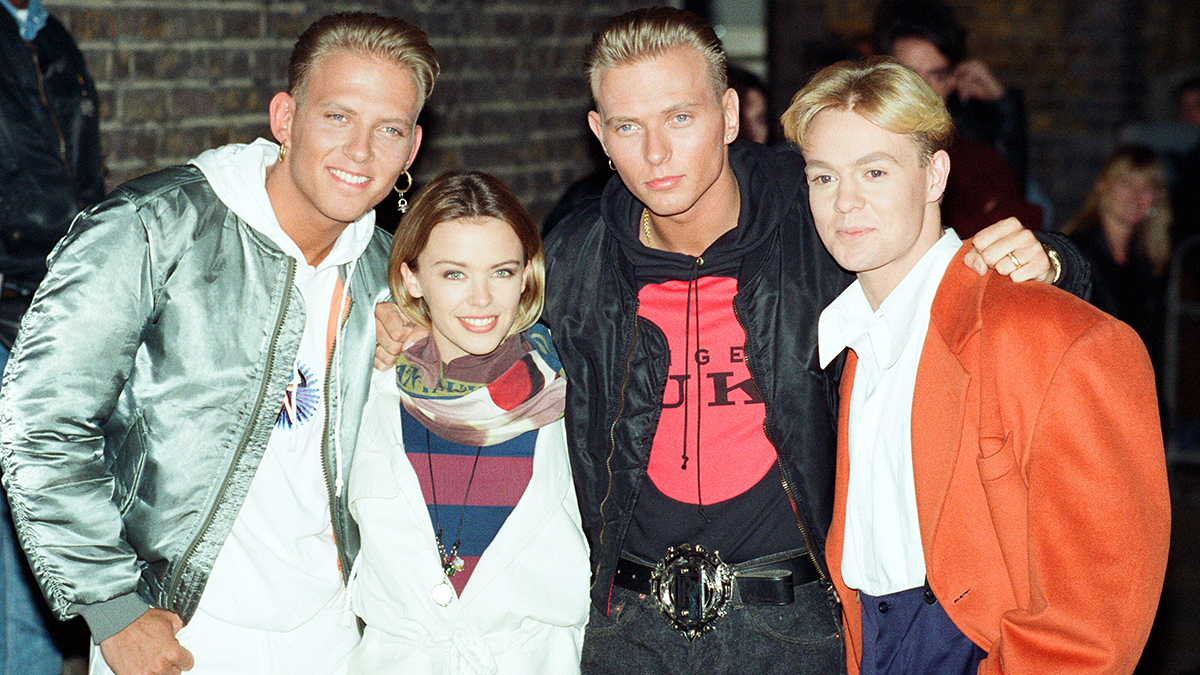
There’s no need to be afraid
You know the story. In 1984, Bob Geldof and Midge Ure cranked out a winsome little half-song and persuaded rock and pop’s great and good to hop on board and make it a hit. Do They Know It’s Christmas? was a million seller in its first week on sale, going on to hold the UK’s number one slot for five weeks and raise £8 million for aid famine relief in Africa.
However, by 1989, five years later, the crisis in Africa hadn’t abated, and once more feeling the need to act, and under pressure to work more magic, Bob Geldof weighed up his options. Reluctant to simply re-record the track only to be accused - again - of cashing in on a crisis in order to prop up his own career, Geldof chose to pass the baton to someone more likely to make it a success second time around.
Producer and record company owner Pete Waterman circa 1989 was at the peak of his powers. As part of the Stock Aitken Waterman production team he was responsible for an incredible 27% of the UK record business that year alone.
Here was a man who was not only perfectly placed to get together the stars of the day, orchestrate and produce a new record, but also press it and get it into shops in time for Christmas. Plus, there was a bonus on offer that made the task all the more alluring.
The greatest gift they’ll get this year
Attaining the UK's ‘Christmas number 1’ used to be the most prestigious prize in pop. Not only would the winner’s track go down in history, being added to lists and stats and revisited every year until the end of time, but Christmas also marks the peak of the record buying season. All of which meant that being top of the most profitable chart of the year means making big money.
Thus, since 1987, Stock Aitken Waterman had consistently lined up a festive banger with their top artist of the day in order to win pop’s biggest prize. But so far all they’d gained was a slew of number twos.
1987’s jingly When I Fall In Love by SAW golden boy Rick Astley was held off the yuletide topslot by Pet Shop Boys’ Always On My Mind, while 1988’s double-headed Especially For You by Kylie Minogue and Jason Donovan got served up as seconds behind Cliff Richard’s Mistletoe And Wine.
1989’s seasonal stab would be a solo performance from Jason Donovan, and while his When You Come Back To Me is a song full of textbook festive cheer (including lyrics about ‘arms full of presents’ and plenty of clanging chimes of doom courtesy of the Korg M1’s preset number 15, ‘Tubular’) it was already tucking into another stuffed number two, being outgunned by Jive Bunny And The Mastermixers Let’s Party.
However, SAW’s seasonal fortunes were about to change, as, on the way to his work's Christmas party, Waterman took that call from Bob Geldof.
Spread a smile of joy
SAW & PWL Christmas parties by this time were legendary. Generous to a fault, Waterman spared no expense each year, throwing elaborate themed soirées for his staff, business connections and the label’s stars. 1989’s ‘do’ took place on Friday, 1 December at London’s Savoy with a casino theme where guests gambled fake money at roulette tables.
“We were on our way to our Christmas party when Bob called us and said ‘It’s your turn,’” Waterman told Sara Cox in 2017. “So I went to the party and said ‘Everybody, you’ve got to be back at work on Sunday. We’re doing Band Aid!’”
With subsequent charts falling on 17 December and 23 December, Waterman was being given two more bites of the mince pie to score his elusive Christmas chart topper. But he and his team were going to have to move fast…
And in our world of plenty
However, while in 1984 ex-punk, ex-new wave, ex-famous frontman Bob Geldof had been able to summon up the phone numbers and corresponding confirmations from anyone worth their salt, it appears that the infinitely more connected, current and persistently chart-topping Pete Waterman was having some problems with his line.
If putting the original Band Aid line-up together was like the careful curation of a Fortnum & Mason Christmas hamper, then arranging Band Aid II’s innards looks more like a smash and grab at the all night garage.
The paucity of stars on board what was quickly christened Band Aid II is even more surprising considering that, in 1987, SAW had produced Ferry Aid’s Let It Be, a charity record to raise money following the Zeebrugge ferry disaster. This featured heavyweights such as Paul McCartney, Kate Bush, Mark Knopfler and Boy George, with a closing chorus that reads like a 1980s UK who’s who.
While it took an annotated chart on the back of the original release’s sleeve to spell out the identities of the 37 stars who’d amassed for its recording, the stars of the second are instead dashed off in 16 bullet points meaning that Band Aid II’s role call reads more like anyone who had signed SAW’s studio guest book in the last fortnight (and had helpfully left a forwarding number).
That’s not to say that the likes of Kylie Minogue, Jason Donovan and Bananarama (here in Jacquie-not-Siobhan formation) weren’t clearly bankable, but Big Fun, Sonia and The Pasadenas? Really?
Even front and centre, big hitters Bros were actually on the wane in late ‘89. The boys were busy flogging a ‘difficult second album’ and enjoying diminishing returns, with their last single just scraping to number 10 weeks earlier.
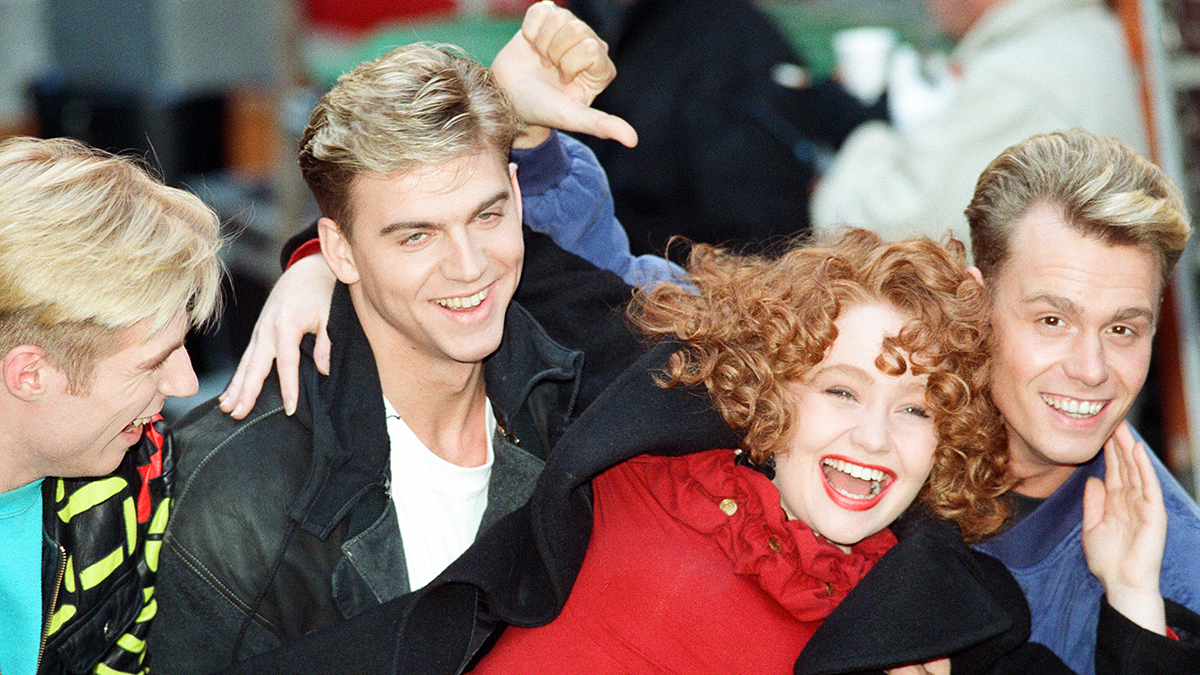
Elsewhere, the presence of (10cc and Godley and Creme’s) Kevin Godley smacks of someone’s alarm clock going off five years too late, and it’s safe to say that the occasion didn’t prove to be the career springboard that Glen Goldsmith (?) had been hoping for. Special mention to (Pump Up The Jam’s) Technotronic at this point, whose reward for showing up was to have their name mis-spelled on the sleeve. Oops.
Elder statesman roles this time fell to Driving Home for Christmas-hitmaker Chris Rea, and Cliff Richard, who’d topped the UK chart the previous year.
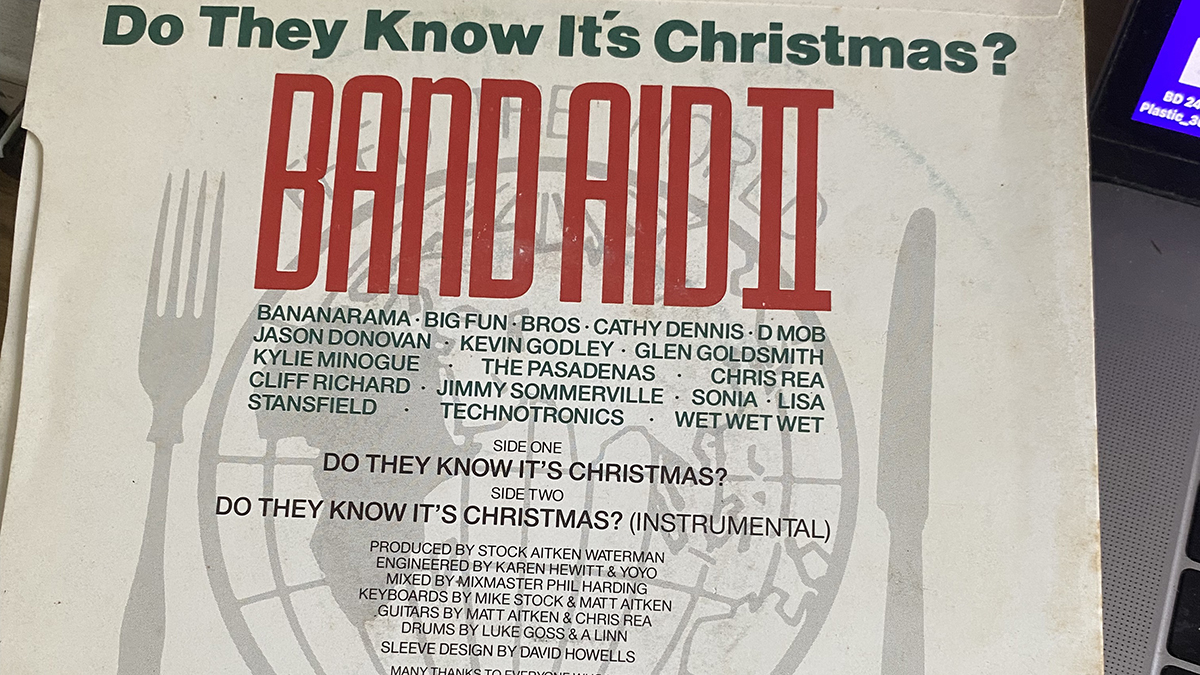
Pray for the other ones
So who should have been on Band Aid II? Well, first of all there were still plenty of major acts who, for whatever reason, were absent from Band Aid’s 1984 recording, and you’d have thought may have been open to the idea of getting involved. The likes of Elton John, Paul McCartney, Rod Stewart and Robert Palmer all had top 40 hits in the weeks preceding Band Aid II’s gathering, yet are absent.
Even more surprising (considering the star billing granted to Sonia and Big Fun) is the lack of Rick Astley, Samantha Fox, Sinitta, Brother Beyond, Pat & Mick, London Boys, Donna Summer and other SAW stalwarts, all of whom would religiously turn up for every Saturday morning TV show throughout 1989 but weren’t there for a Sunday afternoon remake of the most famous single of the ‘80s.
Are you trying to tell me that the Reynolds Girls were busy?
And while no-shows from the so-hot-right-then Stone Roses, Happy Mondays, Beautiful South, Inspiral Carpets, Jesus And Mary Chain and Iron Maiden are perhaps easy to parse, the fact that high-profile 1989 chart-botherers Soul II Soul, Erasure, Fine Young Cannibals, Pet Shop Boys, Milli Vanilli, Deacon Blue, Transvision Vamp and Living In A Box aren’t there seems less easy to explain.
It’s fair to say that, by 1989, SAW were increasingly being seen as a divisive force in music. Thus, it’s likely that their presence dissuaded far more stars than they lured.
And while Bananarama appear on both the ‘84 and ‘89 recordings, being the only band to do so, other venerable ‘80s institutions such as Eurythmics, Tears For Fears, UB40 and Depeche Mode are absent not once, but twice. Meanwhile, you’d have thought that pivotal DTKIC figurehead George Micheal, who had been conquering the world with mega album Faith all through ‘89, might have been handed the mic for a second spin.
This could, of course, all be due to SAW’s studio famously only owning one microphone; all of the vocals on their productions were recorded on a single Calrec Soundfield mic which Waterman blagged in exchange for an ongoing on-sleeve credit. So perhaps the legendary production team had to keep the numbers down?
But, technical tightness aside, it’s far more likely that the paucity of invites and show-ups was actually due to the looming presence of SAW themselves. While Geldof was certainly, on paper, correct in passing the baton to Stock Aitken Waterman - the most successful production team of the 80’s - it’s fair to say that, by 1989, SAW were increasingly being seen as a divisive force in music. Thus, it’s likely that their presence dissuaded far more stars than they lured.
Where nothing ever grows
By 1989, Stock Aitken Waterman had crafted what’s best described as a ‘signature sound’. In the early ‘80s they’d shown remarkable flair, able to genre-hop from soul to R&B to hi-nrg to pop and back again, always in search of what’s hot and able to keep up with and ace whatever pop styles the ‘80s flung at them.
However, by 1989 the sheer volume of their productions - 24 singles and three full albums in that year alone - meant that they had nailed a formula that produced ‘hits’ and by God they were sticking to it.
So, sure enough, the half-baked, chorus-free, lovable shambles that was the original Do They Know It’s Christmas? was given an identikit, rinky-dink, state-of-the-art Stock Aitken and Waterman production, all programmed up overnight by their backroom team, appearing on the desk just as they liked come the morning of the 3 December 1989 - just two days after Waterman had taken the call from Geldof.
Band Aid II’s shiny new DTKIC is all crystalline digital synth presets over a deep Yamaha DX7 FM bassline and a Soul II Soul Back To Life shuffle beat. Add SAW’s familiar bright synth strings, organ and chimes from Roland’s D-50 and some cool and breezy Mike Stock guitar DI’d into the desk (they only had one mic, remember) and you’ve got the perfect backdrop for some up-front, lightly chorused and delayed lead vocals with thin and immaculate BV’s from SAWs seasoned squad of sessionistas.
“Somehow we found a way to make it more dance orientated,” writes mix engineer Phil Harding in his book PWL From The Factory Floor. “Most people liked it but to this day the version that gets played on the radio is always the 1984 original. It’s very rare to hear our PWL version. Most people would rightly say that it’s an inferior version but at the time it seemed totally the right thing to do.”
There’s a world outside your window
Thus, come the morning of the 3 December, in an almost shot-for-shot remake of the scenes from five years earlier, news footage from the day shows Band Aid II’s stars arriving at SAW’s Vineyard studio, tucked down an alleyway behind London’s Borough tube station.
We see tiny Kylie Minogue arriving bright and early, flanked by countless minders while a small gaggle of polite fans part the way to allow her through. Sonia, meanwhile, walks to the studio completely unhindered, accompanied by a man who looks suspiciously like her oversized dance partner from the Never Stop Me From Loving You video… But who, disappointingly, isn’t.
Things get markedly more dramatic for Bros’s arrival, however. Arriving as darkness begins to fall, an army of rampaging Brosettes (doubtless given the exact time and place of their idols’ surprise disembarkation) bar their way, meaning that the boys - arriving in convoy in a matching Jag each (to record a charity single – go figure) - have to be driven down the Vineyard’s narrow alley entrance while security hastily erects barriers to keep the teenage rampage at bay.
Tonight thank God it’s them
And with the stars safely amassed within SAW’s walls it was time to uncage the magic.
While 1984’s Do They Know It’s Christmas kicks off in a calm, low gear with a superb opening scene-setter from the soulful Paul Young, 1989’s reworking shows no such restraint in keeping its star powder dry. Instead, the track opens with a reedy salvo from Kylie Minogue - PWL’s artist of the day - pushing their number one singer front and centre to make up for the lack of firepower to come.
Minogue proves an odd choice given the song’s rising melodic structure. While, on the original, Young proves a perfect vehicle for the opening lines, beginning slow and low, allowing his compatriots only ever rise towards its Feed The World conclusion, Minogue opens the song already at stretch, jousting with digital organ and strings, testing her upper register and effectively giving the song nowhere to go.
Thus it falls to a lozenge-free Chris Rea to bring the track way back down to earth with an excessively throaty “We let in light and we banish shade” that’s part Bob Dylan, part Ebenezer Scrooge and entirely in need of a good cough.
Special mention to the three-part non-harmony of Big Fun’s “We can spread a smile of joy” as each member grasps the same lead melody for the world’s weediest terrace singalong. And a big two-fingered clap to Matt Goss’s innovative new timing for “Throw your arms around the world at Christmas time,” which suggests that he hadn’t heard the song until two minutes before he had to sing it.
In fact, every artist on the track feels the need to radically reinterpret the sterling work provided five years prior. Cliff Richard both pauses and rushes through “But say a prayer, pray for the other ones,” while Wet Wet Wet’s Marti Pellow ad libs ridiculously while audibly beaming from ear to ear.
And Bono’s immortal “Well tonight thank God it’s them instead of you” line? That’s a double header from Jason Donovan and Matt Goss, who phone it in like it’s their takeout order before Goss makes it even better by adding “Nah, nah. Yeah” at the end. Wicked.
We let in light and we banish shade
But perhaps the biggest facepalm of Stock Aitken Waterman’s DTKIC unravelling is their insistence on reworking the song’s infamously quirky structure. Unable to contemplate the chorus-less nature of the original, the boys fix everything by jacking in its “Feed the world” climax two minutes too early as a faux chorus directly after Goss’s not-Bono bit.
It’s a jarring shift in pacing and pitch, requiring Pellow to radically reinterpret “And there won’t be snow in Africa this Christmas time,” in order to segue from new ‘chorus’ into what SAW have now denoted as a second verse. The result is that the song’s “Here’s to you, rains that last for everyone,” poignant tempo-shift comes much later in the song, though perhaps is now occupying the classic post-second-chorus middle-eight position that it should have done in the first place. Hmm…
However, adding two ‘new’ choruses means that DTKIC II now runs to a bulky 4:24 compared to the altogether snappier 3:43 for the 1984 original, with the extra duration meaning that the song now thoroughly outstays its welcome with its final rousing, repeated “Feed the world” relegated from surprise bookend singalong to just another boring chorus too far.
Special mention to Luke Goss’s drum contribution at this point. The Bros star provided three takes of drums - the first time that live drums had been recorded within SAW’s studio walls - with none of his efforts apparently making it through to the final recording.
All in all, listening to 1989’s Do They Know It’s Christmas? is like looking at 2024’s version of Simon Cowell. You kind of recognise it, but you can’t work out what they’ve done with it. And - at the end of the day - you wish they hadn’t messed with it and you know which one you prefer.
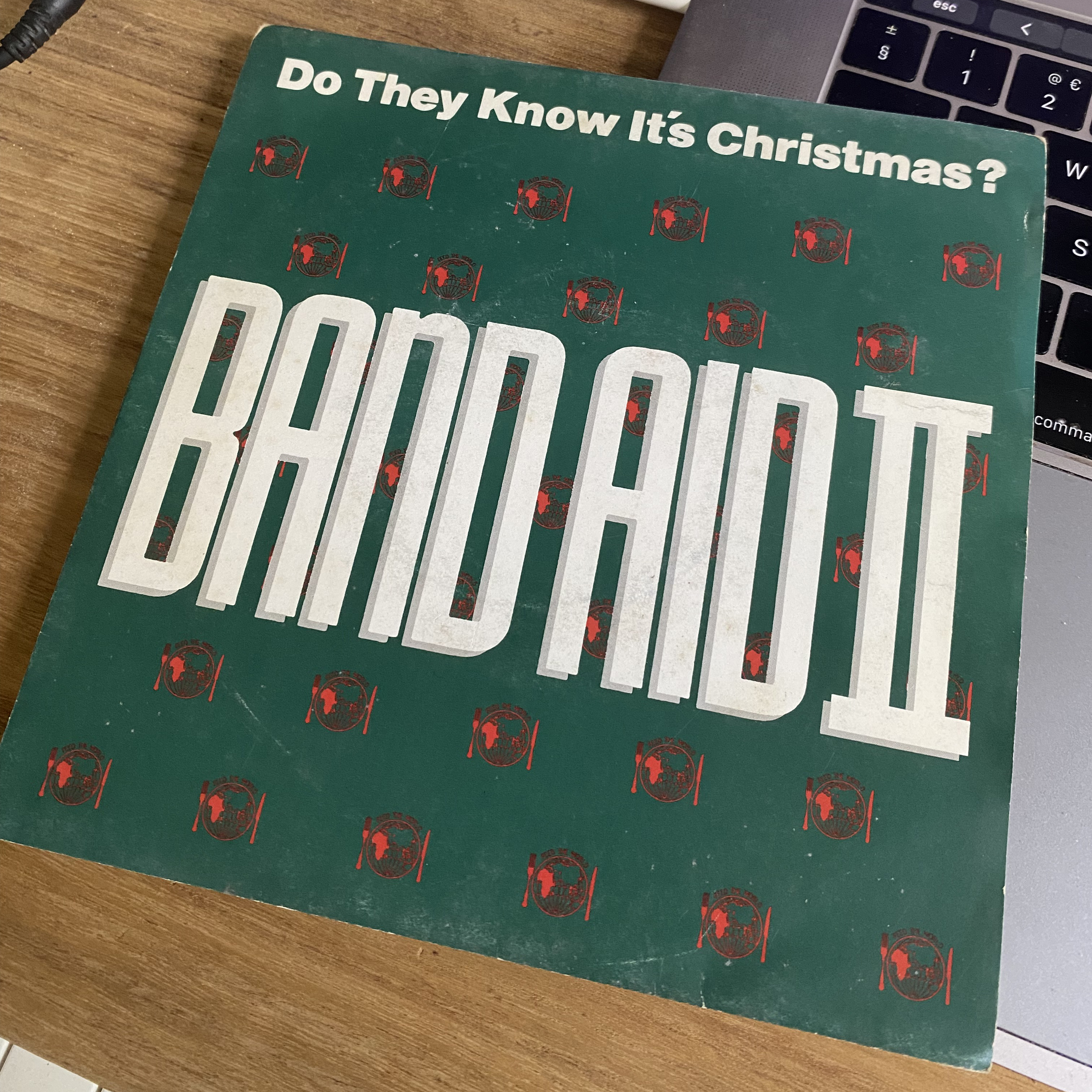
Raise a glass for everyone
If producing the original Do They Know It’s Christmas? back in 1984 had been a mad dash, then 1989’s remake was an altogether less frantic affair. Trevor Horn had given the original gathering only 24 hours of studio time and the vagaries of printing, record pressing and distribution meant that there wasn’t a moment to lose if the record was to be number one in time for Christmas. (The record was recorded on 25 November, mastered and played on Radio 1 early the next day and released on 7 December to become number one on 15 December.)
Band Aid II is therefore laidback in comparison. Waterman owned the studio and record company and so - in theory - could take his time with the production and mix. However, sheer force of habit - the team never spent longer than a few days on any single project - meant that following the recording on Sunday 3 December they spent the following day on the mix and it was ready for its debut on Capital FM on Tuesday 5 December.
The record was released on 11 December and entered the chart at number 1 on 17 December exactly as planned, ending SAW’s seasonal drought.
And while the Band Aid charity, Bob Geldof, Midge Ure and Trevor Horn now appear keen to avoid mentioning the track, Band Aid II was by no means any kind of failure. Their version would remain at number one for three weeks, selling 660,000 copies to become the ninth best-selling single of the year. Figures less impressive than the million copies notched up by the original’s first week sales, certainly, but well ahead of the 200,000 copies sold by Band Aid 20.
So this Christmas spare a thought for Big Fun, Sonia, Technotronic, Glen Goldsmith, The Pasadenas and the rest. Make their day and rewatch Band Aid II’s long forgotten official video below.
Daniel Griffiths is a veteran journalist who has worked on some of the biggest entertainment, tech and home brands in the world. He's interviewed countless big names, and covered countless new releases in the fields of music, videogames, movies, tech, gadgets, home improvement, self build, interiors and garden design. He’s the ex-Editor of Future Music and ex-Group Editor-in-Chief of Electronic Musician, Guitarist, Guitar World, Computer Music and more. He renovates property and writes for MusicRadar.com.











